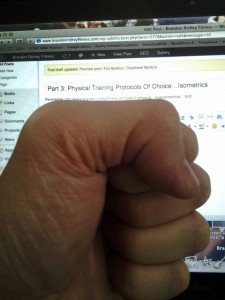
Part 3: Physical Training Protocols Of Choice…Isometrics
by: Brandon Richey
Part 3: Physical Training Protocols Of Choice…Isometrics

Quick, make a tight fist! You just performed a type of isometric exercise. Today I’m closing out the Physical Training Protocols Of Choice series with a discussion on isometrics. As you can see I’m completely committed to the cause being that I demonstrated this very feat while writing this blog post. I’ve provided additional proof of this because if you look carefully at the picture above you can see that above my fist the title of the post is visible on my computer screen. I’m just trying to walk the walk brother!
Isometrics…
Isometrics are defined as a system of physical exercises where muscles provide force and create tension by acting against one another, or against some sort of fixed object. There is no movement or ROM involved in the activity. The beauty of this is that isometrics can literally be performed anywhere and at anytime, as long as you don’t mind looking a little funny making faces and grunting while straining to get the benefits.
Of course I’m joking. You don’t have to make yourself grunt although this may come into play from time to time. The point is that by creating tension throughout the body over the course of a day you are training the body to readily produce tension and will become more accustomed to doing so when you engage in more exercises and drills that require dynamic tension.
Here’s another great guide for training anywhere and at anytime!

Dynamic tension exercises can mimic isometrics in that you are pitting muscles against one another to produce force and tension, however movement is a factor during this particular type of exercise. Dynamic tension is the name that was given to this set of exercises by Charles Atlas during the 1920’s.
An example of this would be using one arm to provide resistance against your other arm by clasping your hands together. With the resistance of one arm perform an arm curl with the other providing resistance during the concentric portion (shortening) and eccentric portion (lengthening) of the bicep curl movement. As you can see there is movement involved, but the amount of force that is applied is totally up to you. The difference is that there is on set amount of weighted resistance to lift in this case so you can scale the difficulty to suit your needs!
Acquiring strength means being creative in how you apply the physical stress!

Now back to isometrics. The point is that if I can make a fist sitting at my desk then I can implement isometrics in most any environment. In addition to this I can still scale the amount of tension and how much I want to exert myself for any given isometric exercise.
You’d be surprised at how effective this type of training is and what kind of benefits you can derive from performing isometrics. Now to point something out I will say that in my experience I prefer to engage various isometric holds for like a 3 to 5 second duration. This allows me the time to build on steadily increasing the amount of desired tension for the exercise.
In addition to this you can benefit greatly from performing isometrics by utilizing them to supplement your normal weight room time if you also happen to be an avid lifter. The combination of isometrics with other types of physical stress is also greatly beneficial and can speed up the development of strength.
Another great benefit of isometrics is that they can benefit a trainee that might be coming off an injury, have limited mobility, or for someone such as an elderly person that is just completely inexperienced with strength training altogether. The point is that it provides a way for the individual to create a natural and scalable means to perform some feats of strength without any real need for supervision, or a previous background in training.
Now don’t misunderstand me. I’m not saying that if you are going to take a comprehensive approach to utilizing isometrics that you don’t have to understand what to do, or how to foster the creativity to produce a desired stress for the whole body. I’m just saying that applying isometrics can be quick, simple, and the trainee doesn’t have to be the best athlete to understand how to apply the method.
In addition to this there are some potential drawbacks as there are with most any method or approach to training. Because isometrics don’t provide a real foundation of movement I wouldn’t want to solely stake the foundation of my athletic career on this approach alone if I were serious about competing. Now having said that I’m always about having a comprehensive approach to training which goes back to what I mentioned earlier in the article about using this method to supplement your weight room time.
Isometrics will feed that dynamic element of your training and I believe they can also enhance a trainee’s ability to specifically draw the demand to contract specific muscles for specific needs in more complex movements. The method is only as valuable as the trainee will allow it to be.
I hope you enjoyed today’s post and if so then please feel free to drop me a comment below in the comment box. Just remember that most anyone can train hard, but only the best train smart my friend.
Related Articles:
Part 1: Physical Training Protocols Of Choice…Lifting Weights
Part 2: Physical Training Protocols Of Choice…Kettlebells & Bodyweight
The MMA Altitude Mask…An Exercise In Futility?
Part 3: Physical Training Protocols Of Choice…Isometrics
Leave a Reply
You must be logged in to post a comment.
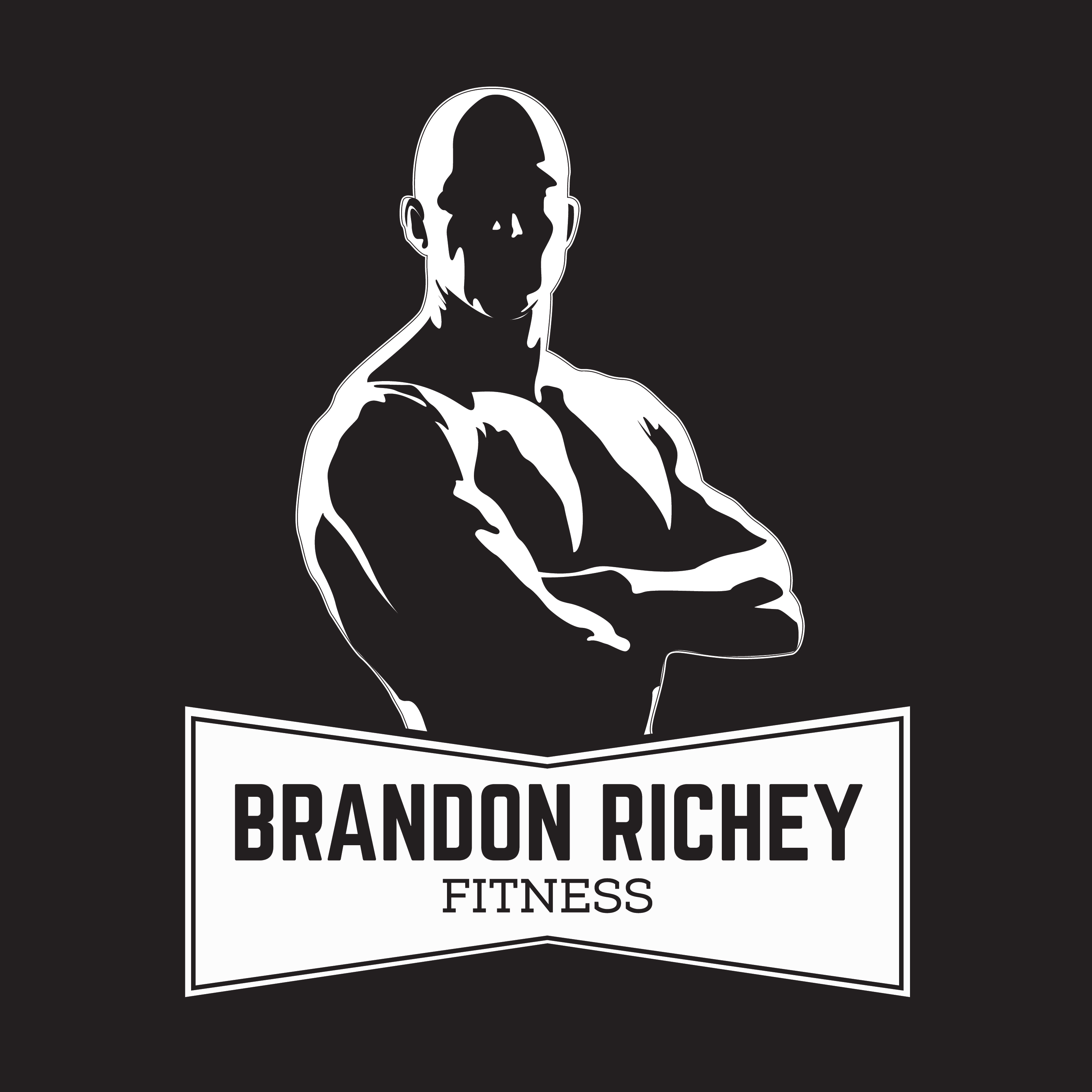
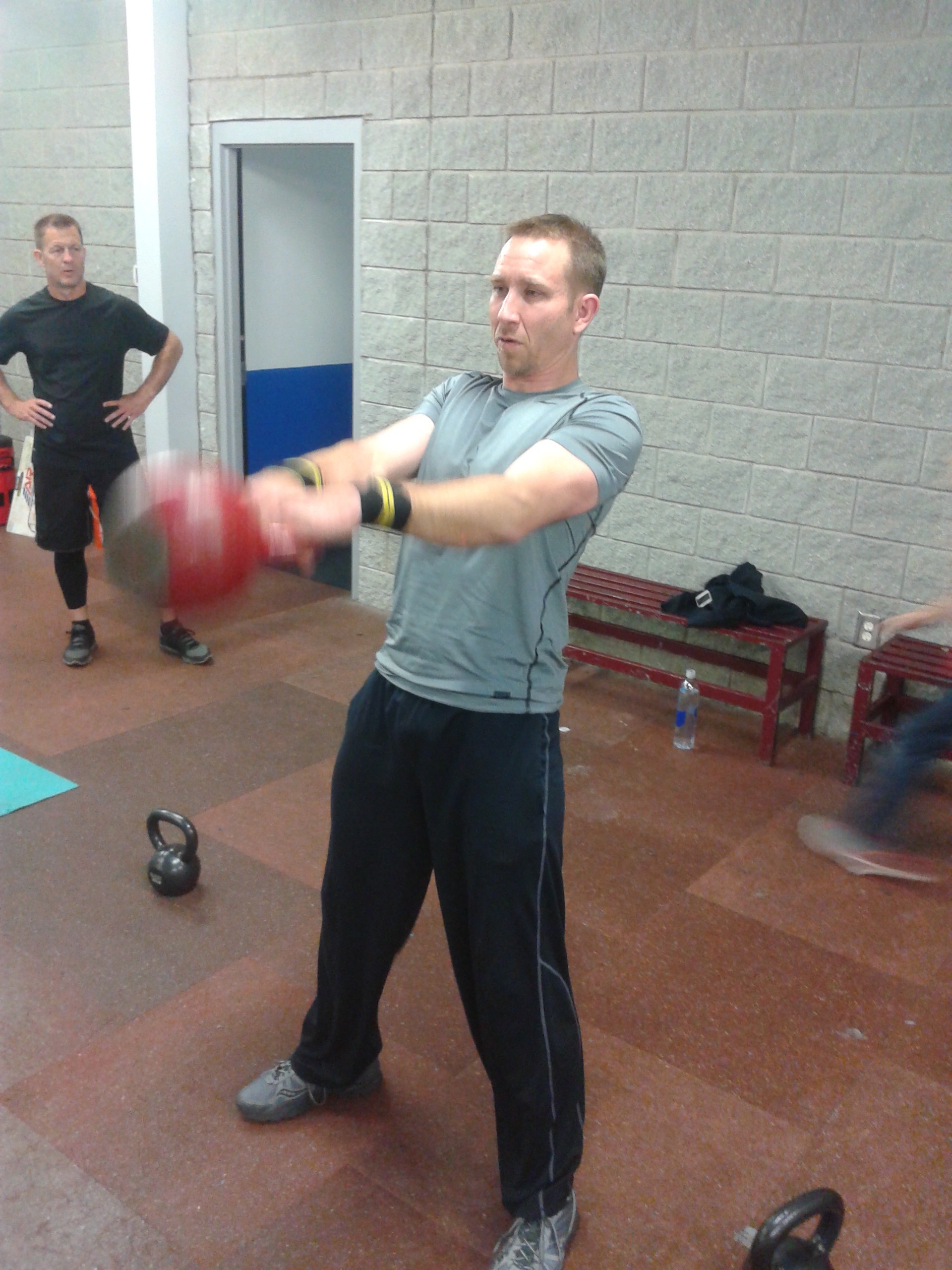

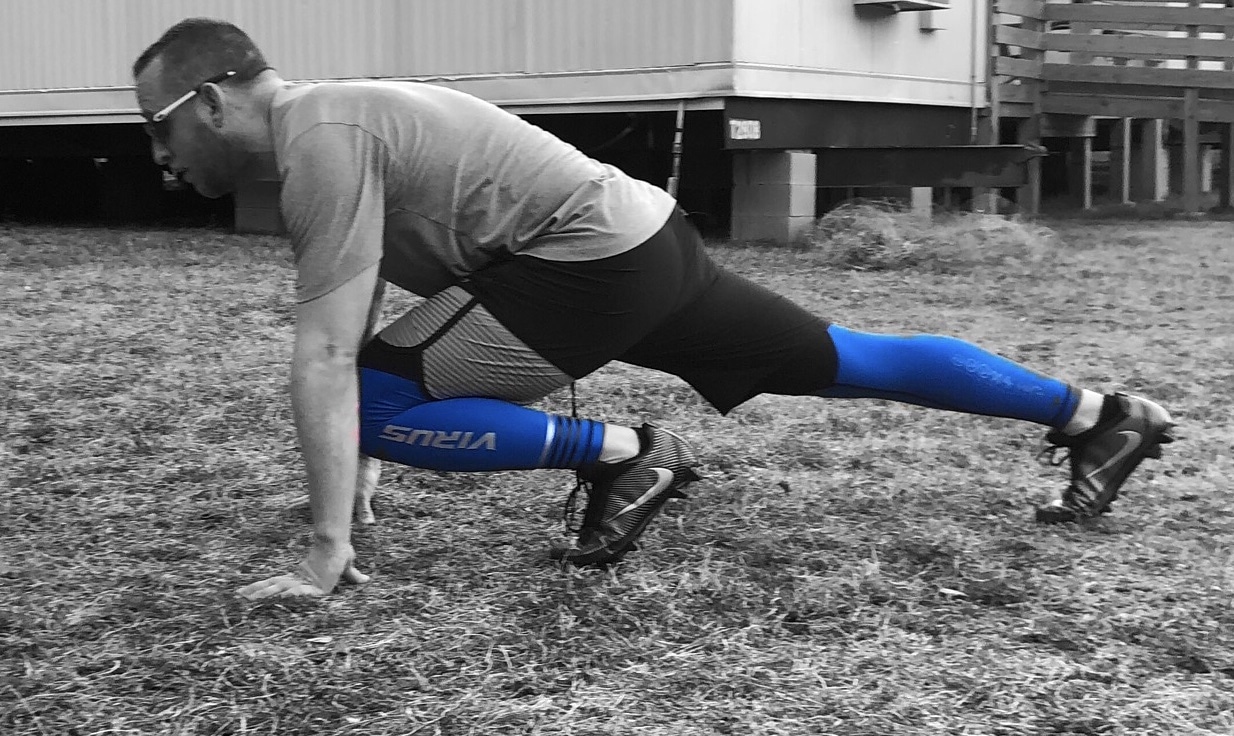
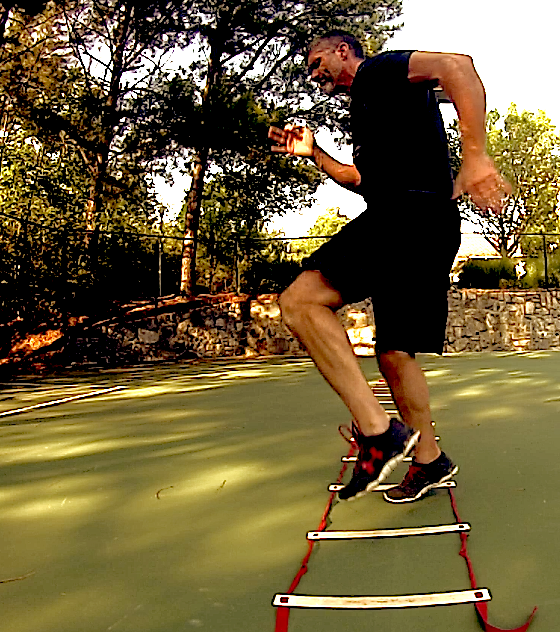

Solid article, Brandon, and I’m hoping that readers are picking up on inference that no “the” way to train in pursuit of fitness (however defined) exists. There are numerous methods of obtaining fitness that have a proven and documented record of efficacy and you’re touching on the big hitters in this series of article.
Your mantra of training intelligently is the primary tenet when considering a training method/protocol. If a person did no more research than carefully read your article series on different training methods they would have the information they needed to explore some viable alternatives to what they’ve been doing. They would also become more informed with regard to the pros and cons of some major training protocols.
Your web site contains advertisements for your products as well as those offered by some other folks who also “walk the walk” and the proof is to be found in their long standing state of physical being. You, and those whose products you allow to be advertised on this site, represent a generation of “Young Turks” who turned away from the appearance over function body building mess and stepped firmly on the path of high end functional strength/conditioning. I note that many paths to the same destination exist and IME the view is great from all of them. To me, it just depends on what a person enjoys seeing and experiencing on their journey to the top of the mountain.